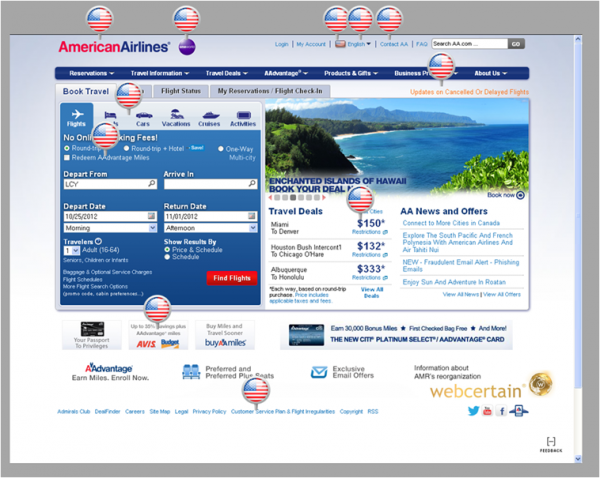Try Auditing Your Trust Anchors To Succeed Globally With Digital Marketing
Almost anyone who specialises in international SEO or SEM will tell you that within a few years, it becomes pretty obvious that most marketers’ problems have little to do with SEO or SEM techniques and are much more to do with brands cutting corners in their enthusiasm to go global. It’s inevitable really. Organizations expanding […]
Almost anyone who specialises in international SEO or SEM will tell you that within a few years, it becomes pretty obvious that most marketers’ problems have little to do with SEO or SEM techniques and are much more to do with brands cutting corners in their enthusiasm to go global.
It’s inevitable really. Organizations expanding abroad often can’t suddenly recruit oodles of people with in-depth international marketing experience — they have to learn on the job. Nor can they absorb all the cultural knowledge and step into the shoes of their customers in all the corners of the globe. So they make mistakes based on the framework of their own knowledge.
Simple Ways Marketers Can Review Their International Content
I believe there are some simple ways in which marketers can review their content in such as way as to make their investments in SEO and SEM much more successful and improve the conversion of the websites.
One way would be to seek the opinions of potential users from the target countries — nothing less than market research in fact. The downside of this approach is it can produce a lot of opinions without pointing at some useful practical steps.
You may have read or heard me talk about “Trust Anchors”. What I mean by “Trust Anchors” are features of webpages which link strongly to ideas of trust and are therefore very helpful in encouraging users to continue to work with the brand through to conversion. Unlike “trust factors”, anchors are visible on the webpages themselves.
How To Have A Strong Effect On Management For Little Cost
Tools like Google Analytics Content Experiments provide a sophisticated way of looking at conversion and testing different ways of presenting content — but that’s not what I’m addressing here. Rather, I’m talking about an approach that can be deployed with much simpler tools.
Check out the image below and you’ll see a method which I think is very simple and yet very powerful, particularly in the effect it has on management, for very little cost.
Note that in the images, we are comparing American Airlines US and UK not because they do it badly — but because they do it well. I don’t wish to be responsible for humiliating organisations in public!

American Airlines US Homepage With Trust Anchors Identified
As you can see in the image above, we’re adding a US pin button to elements of the page we consider to be trust anchors for American Web users. Then we do the same for the UK below and hey presto, we have some immediate pointers as to how we can improve performance and rankings.
Why Does This Affect Rankings?
It’s increasingly clear that Google uses signals from users who click through to pages from the SERPS and then return quickly as a negative signal. The opposite is true of users who don’t return so quickly.
If your page derives little trust from the users, they are more likely to return to the SERPS quickly. Hence, building trust on the page not only drives conversion (obvious point), it actually also enhances SEO, rankings and especially traffic.
In the homepage targeted at the US above, we can see that trust factors include the well known US brand, the Oneworld symbol, US flag and English language link, contact us options, live updates on flight statuses, customer service references and the Avis brand, itself pretty well known.

American Airlines UK Homepage With Trust Anchors Identified
Turning to the UK homepage (above) we can see that the story is a little different. The American Airlines logo counts for a little less — so we didn’t give it a pin. (It’s difficult to change this without removing “American” from the name which is always bound to chime strongly with Americans and less so with other nations. Not a criticism you’ll understand, just an observation.)
Oneworld is a well known brand in the UK, so that scores and the Union Jack flag helps when a US flag would be less friendly to the user. Lower down the page, you’ll note a reference to UK schedules, which is good, and a banner showing One World airlines — including ones which would be well known to UK flyers.
Whoops! There Are A Couple Of “Leftover” Items Aboard!
However, there are a couple of US pins on this page too. These show “leftover” items which have drifted across from the US site. The reference to “Chapter 11” for instance. Many Brits will not know what this is and may be concerned. Also, the “Unaccompanied Minors” is usually expressed as “Children Travelling Alone”.
Overall, we managed to identify 11 positive trust anchors on the US homepage and just 8 postive with two negative on the UK page. Relatively speaking this is a good show, but it’s not uncommon to see 12 or more on a US homepage and just two or three trust anchors on pages targeted at other nations.
If you choose to give this a go, by all means drop me a line — I’d be fascinated to see how this is used by others and what it achieves.
Contributing authors are invited to create content for Search Engine Land and are chosen for their expertise and contribution to the search community. Our contributors work under the oversight of the editorial staff and contributions are checked for quality and relevance to our readers. The opinions they express are their own.
Related stories
New on Search Engine Land